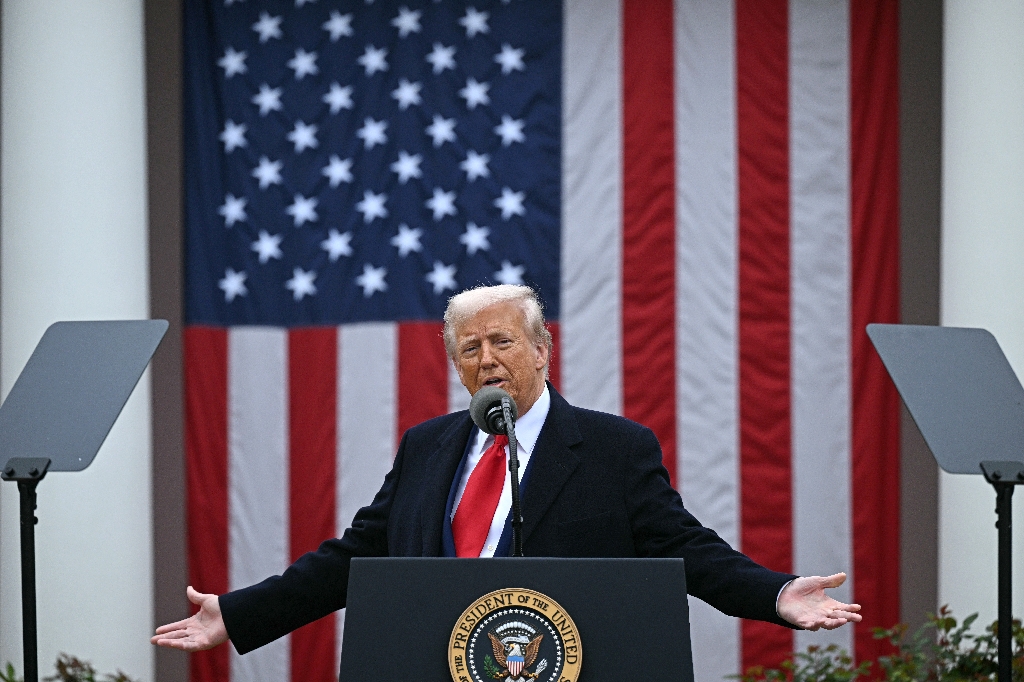New York (AFP) – US vehicle sales got a boost from strong demand in 2023, due in part to attractive offers by automakers and dealers in the face of high interest rates and stubborn inflation.
Industry experts estimate that around 15.5 million vehicles were delivered in the country last year, marking an increase of almost 13 percent from 2022.
“Auto sales ended up being much stronger than most expected in 2023,” said Garrett Nelson, senior equity analyst at CFRA Research.
“We’re getting closer to pre-covid levels,” he told AFP.Sales exceeded 17 million vehicles annually over the 2015-2019 period.
Nelson expects sales to rise by three percent in 2024, to around 16 million units.
Automotive research firm Edmunds is less optimistic, however, expecting just a one percent rise in sales to 15.7 million units.
According to Nelson, sales have benefited from improved supply chains and more inventory at dealers.There was also greater choice for buyers, who took advantage of promotions, price cuts and federal subsidies.
Electric vehicle maker Tesla, for example, was among those to lower prices.
“Prices overall were down about two to three percent, much more than that for electric vehicles, but they’re still at elevated levels,” Nelson said.
Holding on to its crown as the top-selling automaker in the United States last year was General Motors, which claimed a 16.3 percent market share and reported 2.6 million in vehicle sales
.
– Affordable prices – GM “had great success” with affordable SUVs, said its North America president Marissa West.This enabled it to sell more than one million SUVs in a year for the first time.
Shoppers are “seeking options on the affordable side of the new vehicle market,” according to Edmunds.
It added that vehicles below $50,000 are sold out within an average of 30 days, compared with 47 days for more expensive models.
Meanwhile, the share of electric vehicles in the market should continue rising, from 6.9 percent in 2023 to eight percent of all sales in 2024, Edmunds said.
Tesla, which does not detail its sales by country, delivered 1.8 million vehicles globally last year — a 38 percent jump from 2022.
While it retained its number one position internationally for the full year, it was surpassed in the fourth quarter by Chinese manufacturer BYD.
Even as automakers lauded the performance of their electric models, the pace of sales has fallen short of expectations, prompting some to review their projects.
GM, for one, has delayed the transition of its Orion plant into an EV truck factory by a year to 2025.
But overall, the company logged EV sales of 75,883 units, a 93 percent jump.
Ford, whose US sales rose to almost two million vehicles in 2023, also noted “accelerating sales of its electric and hybrid vehicles to new records.”
Alongside Stellantis, which delivered 1.5 million vehicles last year, GM and Ford form the “Big Three” automakers hit by a six-week strike ending in late October.
The end of the labor action came with new collective agreements involving better wages and other benefits.
“Their margins are going to be under pressure from those higher labor costs and the new labor deals,” said Nelson.
Among other major players is Japanese automaker Toyota, which reported US sales of 2.2 million vehicles last year, including over 657,000 electrified vehicles.
The group has announced investments of nearly $16 billion in the United States, including almost $14 billion for a major battery plant in North Carolina.




